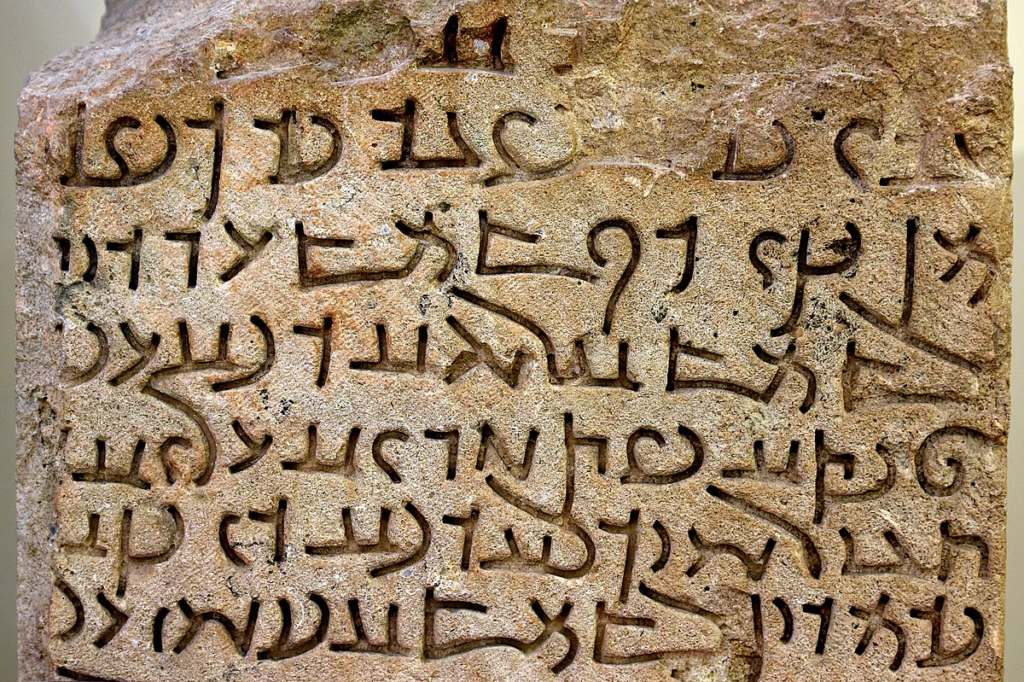Etymological Exploration: The Religious Language, Aramaic

By: Maryem Bouatlaoui / Arab America Contributing Writer
Origins of Aramaic

Aramaic originates from the Arameans, an ethnic group native to Syria and southern Turkey. People spoke Aramaic all throughout the Mesopotamia and Levant region including Assyrians, Babylonians, and Phonecians. Aramaic also served as the official language of the region’s administration for centuries. Old Aramaic was central to the Neo-Assyrian Empire (911–608 BC), Neo-Babylonian Empire (620–539 BC), and Achaemenid Empire (500–330 BC).
Aramaic belongs to the Northwest group of Semitic language family which includes Phonecian, Hebrew, and Ugaritic. The written Aramaic script draws lexical inspiration from the Phoenician language. Aramaic script also serves as the base for Hebrew and Arabic. Arabic and Aramaic share similar linguistic traits in that they have similar vocabulary, pronunciation, and grammatical rules.
Aramaic in the Religious Context
Aramaic holds immense significance in the context of Christianity, primarily because it is believed to be the language spoken by Jesus Christ during his time on Earth. As the language of the people in the region where Jesus lived and preached, Aramaic played a crucial role in shaping the early Christian teachings and scriptures as some sections of the Old Testament are written in Aramaic. Studying Aramaic provides scholars and theologians with valuable insights into the cultural and historical backdrop of Jesus’ ministry, allowing for a deeper understanding of the religious texts and traditions that form the foundation of Christianity.

In the context of Syrian Christianity, Aramaic is considered the language of their religious and cultural heritage. Aramaic, specifically its Syriac dialect, has been the liturgical language of various Syrian Christian denominations, including the Syriac Orthodox Church, the Assyrian Church of the East, and the Chaldean Catholic Church. The use of Aramaic in religious ceremonies, prayers, and hymns establishes a direct linguistic connection to the early Christian communities in the region. For Syrian Christians, Aramaic represents a tangible link to their ancestors and the roots of their faith, fostering a sense of continuity and tradition.
An Endangered Language
In the modern context, Aramaic, once a widely spoken language, is facing a rapid decline. According to linguistic studies, there are currently only a few thousand native Aramaic speakers worldwide, primarily residing in the Middle East. These communities are shrinking rapidly due to emigration, intermarriage, and assimilation into larger linguistic and cultural groups. For instance, in southeastern Turkey, where Aramaic-speaking Assyrians have lived for centuries, the number of speakers has dramatically dwindled from over 200,000 in the early 20th century to just a few thousand today. Similarly, in Syria and Iraq, where Aramaic-speaking Christian communities have existed for millennia, the ongoing conflicts and displacement have further accelerated the decline. Without active efforts to preserve and promote the language, Aramaic faces the risk of becoming extinct, erasing a crucial part of human linguistic and cultural heritage.
Aramaic in Academia
In recent years, Aramaic departments at universities around the world have been actively engaged in efforts to revive the language and its cultural heritage. Scholars, linguists, and archaeologists are collaborating on various initiatives to document remaining Aramaic dialects, preserve ancient manuscripts, and develop educational programs. For example, the Department of Near Eastern Languages and Civilizations at the University of Pennsylvania offers Aramaic language courses. These concerted efforts by academic institutions are crucial in not only safeguarding Aramaic but also in fostering a renewed interest in the language, thereby contributing significantly to its revival.
Check out Arab America’s blog here!









